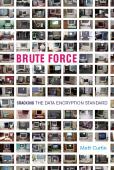The Rosetta Stone
My copy of this book is a fine printing released by The Folio Society just this year. This book comes in two parts: The Rosetta Stone (originally published as La Pierre de Rosette by Editions du Seuil, Paris, in 1999. Translated by Steven Rendall, the text begins with the discovery of the stone, taking the reader through the account of the struggle over who would get the stone and the birth of a new science—Egyptology—during the efforts to decipher the stone's inscriptions.
The tale makes an excellent account that demonstrates the basic principles of science in action: observation or discovery leads to development of a hypothesis, which is then tested, debated, and revised, until some critical mass of consensus can be achieved. Thus a theory is born, a working description of a system or process that generally achieves the end while still being subject to revision upon further discovery or analysis.
Scholarly knowledge of Greek provided the basis for excitement among the Rosetta Stone's discoverers: the final line of the Greek text said, “This decree shall be inscribed on a stelae of hard rock, in sacred characters, both native and Greek, and they shall be erected in each of the temples of the first, second, and third category, next to the image of the king living eternally.” This line proved especially exciting because it showed that the inscriptions were related. With their knowledge of the Greek language, they hoped to be able to read the hieroglyphic text, whose understanding had been lost for fourteen centuries.
Ideas on the nature of the Egyptian language and its hieroglyphic text abounded, including a supposed relationship with Chinese. Unlocking the secret of hieroglyphic writing would not come from these sources but instead from the second text of the Rosetta Stone. That text, originally thought to be Syriac, then Coptic, and finally a predecessor of Coptic, Demotic would help Jean-François Champollion to make sense of the Egyptian language and to provide important foundations for understanding its writing.
Part two was originally printed as Egyptian Hieroglyphs, written by W.V. Davies and published by the British Museum Press, in 1987. It gives an overview of the Egyptian language, the scripts used to write it, and principles of the language. Its inclusion in this volume is very welcome, a testament to the thorough success in the decipherment of a script thought at one time to be impenetrable.
This section shows in some detail the development of the Egyptian language, ranging from Old Egyptian (used for the earliest known continuous texts, dating back to c. 2650 BCE) to Coptic, used from the ninth century onward, as well as the major scripts used in writing. Hieroglyphic is the earliest and longest-lived form of writing, with fragments going back as far as 3100 BCE, originally used for everything and later confined to religious and monumental writing as another, less intensive writing scheme developed.
The hieratic, which was used for routine business throughout much of Egypt's history, found mostly on papyrus. Besides official state business, literary, scientific, and religious documents have been recovered in this script. Its earliest forms are essentially a “cursive hieroglyphic” but as time went on, the script became increasingly cursive, harder to connect to the hieroglyphic equivalents.
Demotic was the native script used for daily business; texts recovered in that script are primarily legal, administrative, and commercial in nature, though scientific and religious texts are not unknown. Its lifespan ran from approximately 450 BCE to the fifth century CE.
Coptic was a departure from earlier scripts, which were native to the Egyptians. It is alphabetic, using twenty-four characters from Greek and six characters from demotic used for Egyptian phonemes unknown to Greek. Quite a bit of Coptic text survives, much of it biblical, as well as some private and official correspondence, administrative, business, and legal documents. The makeup of the surviving literature has much to do with the spread of the text being so closely aligned with the spread of Christianity in Egypt.
My first serious consideration of Egyptian language and writing came from my ancient history class in my freshman year of high school. While I have considered it from time to time, I have not given the matter any serious attention. I enjoyed the read greatly and The Rosetta Stone is a welcome addition to my library.

